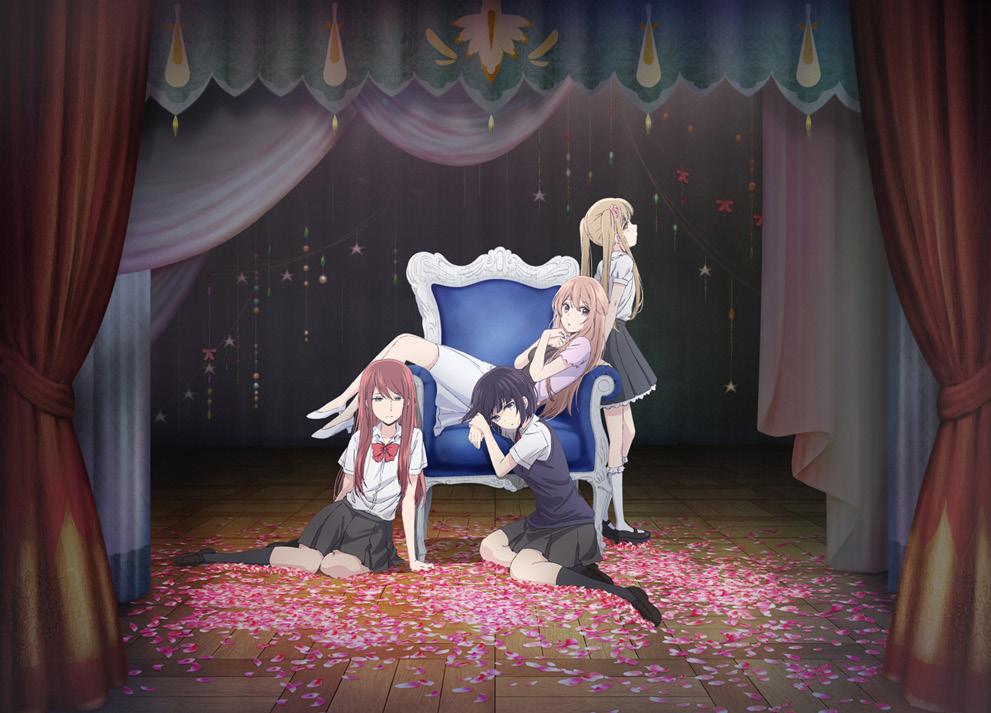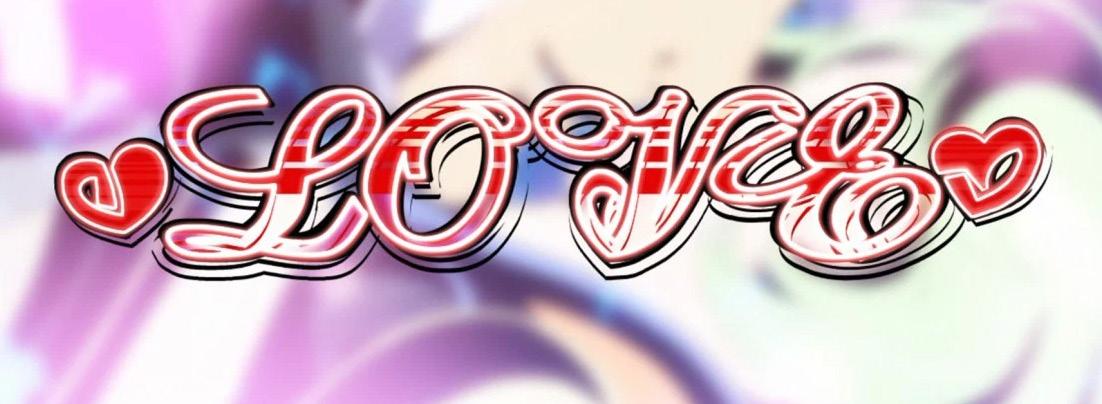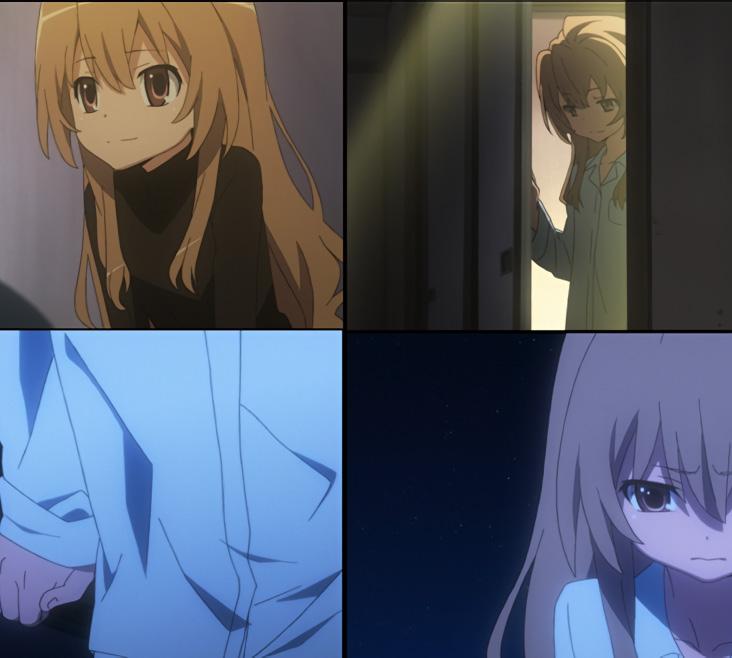
6 minute read
WHAT IS LOVE? BABY DON’T HURT ME ~ NO MORE
BENSON PENG - Writer, 2nd Year, Engineering and Physics
"Another of my favorite romcom - Ano Natsu de Matteru"
Advertisement
Originally published on Feb. 14, 2019
SPOILER WARNING: Redline (minor), Toradora, Nagi no Asukara
February 1st, 2019 – It was a dark and stormy night, and I was running late for my weekly Konshuu meeting. When I arrived at the meeting room, sweating and panting because I ran across the campus in the rain (*Insert Bunny Girl OP*), the director looked at me, and with an authoritative tone, said, “Omae wa mou~ no we need you to write for the Valentine’s Issue”. I, of course, responded, “Nani?!” This is it: this is how I met your mother.
Alright, so let’s talk about romance anime. To me, romance anime is kind of like Kinder Surprise™ chocolate eggs that kids love so much – sometimes you get gems that really sets anime apart from other mediums, and sometimes you get Kuzu no Honkai. Yes, every time I watch that show there is this boiling urge for me to ask the characters, “What are you doing here? Do you guys not have a life to live besides being edgy? Like there are more than 40 active conflicts in this world at the moment and you are here doing this. WHY?”

10/10 IGN - A must watch if you enjoyed White Album 2
The reason I just presented this rant is because I want to illustrate an important point about producing an anime in the romance genre: there is a fine balance bridging the reality and idealization of the subject of love. If you tip too far into either, the balance collapses and you have successfully lost your audience. For example, if a romance anime becomes too ideal so that it devolves into the “once upon a time there is a prince and a princess” trope, it becomes somewhat hackneyed. Of course, some good works deliberately but moderately use this technique as a comedic relief. In the end of the movie Redline, at the end of an intergalactic racing death match with a DANDY hero and a COOL heroine, the entire screen blurs into a big neon sign of “LOVE”, giving me a chuckle and reminding me to enjoy the ride and not take it too seriously.

What more is there to love than a full throttle intergalactic death match?
In another case, the anime tries too hard to pursue the form of realism, incorporating elements from real life such as cheating, commitment issues, and grossly and inappropriately dramatized struggles of sexual identity without discretion or subtlety, and ironically becomes less realistic because now it is just a dumpster fire where the producers/authors indiscriminately pour in the worst they can imagine for shock value. Such is the case for Kuzu no Honkai, and to an extent Citrus. Again, like the former case where there is an inclination towards idealization, there are exceptions where a moderated inclination towards realism is achieved successfully. For example, in the series Oregairu, the protagonist Hachiman breaks away from the norm for protagonists of romcoms of its time, harboring a pessimistic outlook towards romance and youth due to his own social isolation and failed attempts at confession. Seeing how such a realistically flawed character navigate through his youthful challenge is at once refreshing and relatable for many viewers, making the series a successful romcom.

Battle of Jutland – Colorized – Oregairu
Finally, when the two inclinations are balanced, then some of my favorite works in anime history are born. For readers that have read up until this point of the article, this might come as a surprise: romance is actually my favorite genres of anime. To me, a good balanced anime is one of the best mediums for romance, as its abstraction of reality gives it the perfect tool to convey complex emotions and ideas that are based on reality but are more than that. Compared to live-action shows where regardless of how earnestly the actors try to convey emotions, they are nevertheless acting, anime characters are created entities that exist in the medium itself. In the world of anime, the characters are just as alive in the frame they’re in as we are in the real world because they are created along with the world they’re in through the hard work of the illustrators and production committee. As a result, the abstract nature of romantic anime allow us to not just imagine what romance is now, but what romance can be in a different context.
This may sound very abstract, but can be easily illustrated with a few examples. A good example is Toradora!. During Christmas last year, I rewatched Toradora! to keep my holiday spirit alive, and I discovered something that I couldn’t see when I was younger than the characters: their animation tells a lot more about the story than the actual dialogue.
[Heavy Spoiler Warning from this point]
In episode 24 (the second to last episode), Ryuji and Taiga, the show’s hero and heroine, decide to elope to Ryuji’s grandparents’ home. Through a turn of events, they manage to reunite the grandparents with Ryuji’s mother, who was estranged from the grandparents ever since she gave birth to Ryuji outside marriage. Ryuji is glad that his mother and grandparents have remarkably repaired a relationship that has been broken for more than ten years (perhaps in an unrealistically rapid progress). But for Taiga, while she is equally happy to see the parental relationships fixed, she is also torn between her love for Ryuji and her longing for her own mother, whom she have abandoned to ‘elope’. There is no dialogue that explicitly states her inner conflict, but the expressions she makes while seeing Ryuji’s mother and hearing the phrase of “parents” showed her conflict clearer than ever. Another interesting scene in the anime happened earlier in the same episode while Taiga and Ryuji’s friends are helping them elope. One of their friends, Ami, used get into confrontations with Taiga because she dislikes Taiga’s brash nature, but has since grown to cherish her because she sees through and empathizes with Taiga’s struggles. However, she also develops feelings for Ryuji for understanding her “childishness” while everyone else sees her as a mature and successful actress. To conclude her feelings for Ryuji, Ami asks Ryuji whether he loves Taiga while helping them elope. To Ryuji, it seems like another one of Ami’s pranks, but for Ami, it is one of the most emotional moments of her storyline. In my opinion, this scene is brilliant in condensing emotions in a few frames, and I think the industry agrees with me too. In the anime Nagi no Asukara that came out a few years later, one of the main characters, Miuna Shiodome, experienced a very similar turn of events and had a remarkably similar scene.

A sad Taiga breaks my heart
In my opinion, Toradora!, as an exceptional example of a good balanced romance anime, achieves a few extraordinary feats. It is an anime with conflicts arising from nearly every character trying find ways to love each other as friends, family, and lovers without resorting to cheap plot devices such as a malicious Mr. Steal-YourGirl. While the anime is unrealistic in a way that such malicious players exist in real life, it discards such characters in order to focus on its attempt to define what constitutes as love and a happy relationship in an otherwise realistic perspective. It also limits the amount of information the viewers get directly, letting the viewers ponder and discover the subtleties in the plot just like a real person without God’s perspective would. Finally, it portrays emotion in condensed format that is otherwise difficult to act out in real life. Therefore, if you want to share a great Valentine’s Day with your loved one (who hopefully also watches anime), what better way is there than to watch a good romance anime together?

Left: Ami – Toradora! Right: Miuna – Nagi no Asukara Caption: The Pleading Your Crush to Reject You Face



